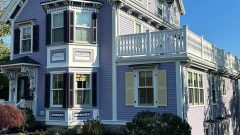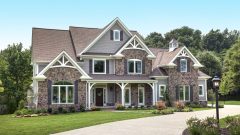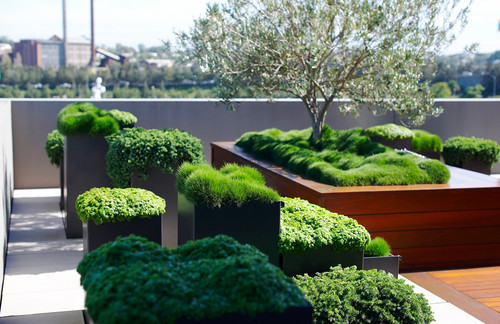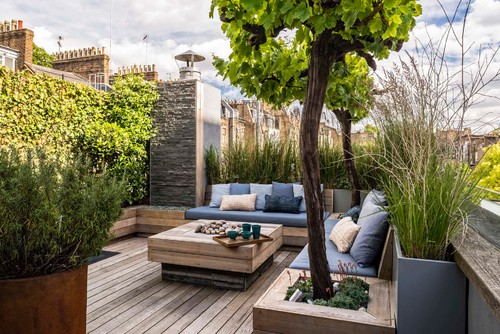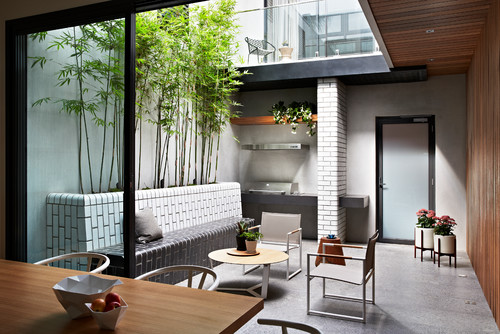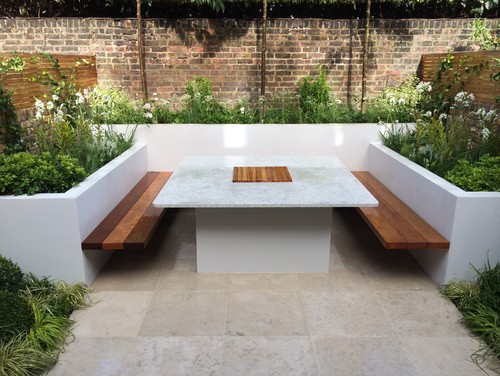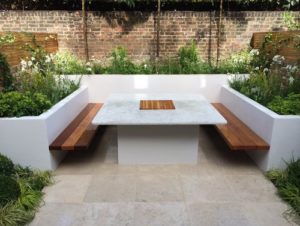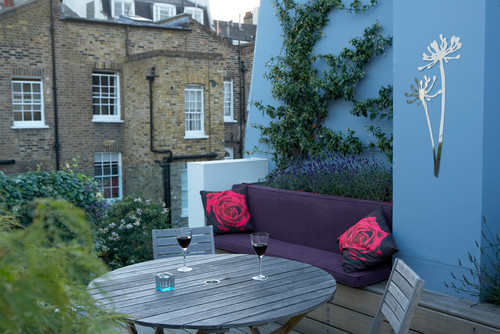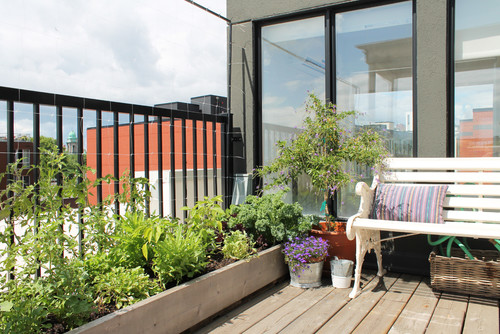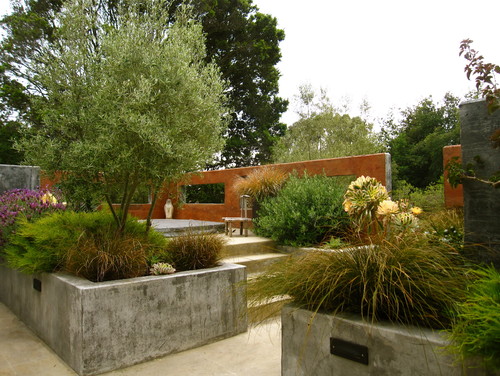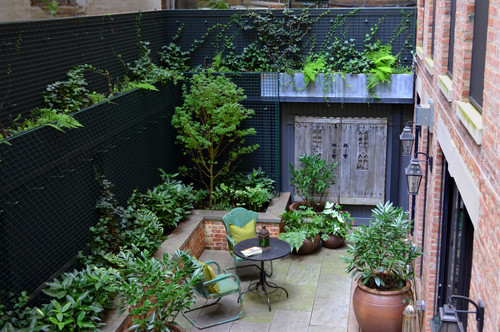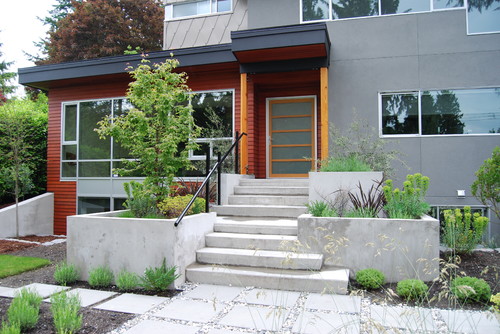12 Ways to Fill Your Built-In Planter
Built-in planters are hardworking garden elements, often doubling as the backs of bench seats, acting as retaining walls for slopes or providing planting space on roof decks and terraces. However, it can be a bit tricky to figure out which plants will grow well and look good in what are effectively giant containers. If you’re looking for inspiration for your built-in planter, take a look at these 12 planting styles in gardens ranging from contemporary to traditional.
1. Contemporary. To give a more modern look to built-in container plantings, you can limit the color palette and plant forms. For example, consider this rooftop planting in Sydney. You’ll notice that all the plants — save the olive tree in the large wooden planter — are low-growing, emerald green ground covers, with the only height variation coming from the planters. This restraint in color and height brings a modern edge to the design and focuses all the attention on the plants’ textures. The soft, moss-like carpet of zoysia grass under the olive tree looks almost irresistible to touch.
While they may look like miniature trees at first glance, the two lollipop-shaped plants are mature grapevines (Vitis vinifera) trained into upright forms. In summer, the vines produce sweet dessert grapes, which can be easily plucked to enjoy on the terrace.

3. Evergreen. On this Manhattan rooftop terrace, boxwood (Buxus sempervirens) planted in a built-in planter behind benches forms a neat and tidy green backdrop. Evergreens offer the advantages of providing year-round structure in built-in planters — saving time on replanting annual flowers or tender perennials — and generally not needing much maintenance.
Other evergreen options to choose from for built-in planters, besides boxwood, include arborvitae (Thuja occidentalis), dwarf cherry laurel (Prunus laurocerasus ‘Nana’), fern pine (Podocarpus gracilior), privet (Ligustrum spp.) and many Pittorsporum varieties.
Photo by Nathan Burkett Design – Look for patio pictures
4. Quick-growing. There’s nothing quite like bamboo for a fast-growing green screen. In this interior courtyard in Melbourne, Australia, the narrow growth habit of bamboo makes it a good choice to fill a blank wall with lush foliage without taking up much floor space.
If you plant bamboo in sturdy built-in containers, you won’t need to worry about its spreading to other areas of the garden (a valid concern with bamboo planted in the landscape). ‘Golden Goddess’ hedge bamboo (Bambusa multiplex ‘Golden Goddess’) is a particularly attractive yellow-stemmed clumping form that grows well in containers and can be maintained at 8 feet tall.
Learn more about growing bamboo in a small space
8. Pollinator-friendly. No matter the size, gardens and planters provide an opportunity to grow plant varieties that help support pollinating birds, bees, butterflies and other insects. For example, the lavender growing in the built-in planter on this London roof terrace would draw bees and other pollinating insects.
Different bloom colors attract different types of pollinators. Hummingbirds are often attracted to red and pink flowers, bees go for bright blue and violet, and butterflies choose bright colors like red, yellow, pink and orange. Growing flowers in a spectrum of colors and with a long bloom season provides a consistent source of nectar and pollen.
9. Edible. Depending on their size and sun exposure, built-in planters can also be a great spot to grow herbs, veggies and berries. Many sun-loving Mediterranean herbs, such as basil, parsley, chives, marjoram, thyme and tarragon, need a planting depth of only 12 to 18 inches to grow – making them good candidates for shallower built-in containers. Most tomato varieties and blueberry and raspberry plants require a bit more planting space, at least 24 inches deep, to thrive.
The concrete planters surrounding this hot tub in a backyard in Aptos, California, offer inspiration for a sun-loving, drought-tolerant planting mix. An olive tree grows in the largest planter, underplanted with a mix of golden breath of heaven (Coleonema pulchellum ‘Sunset Gold’), New Zealand sedge (Carex testacea) and Spanish lavender (Lavandula stoechas). Drought-tolerant foxtail agave (Agave attenuatta) and bright yellow aeonium (Aeonium ‘Sunburst’) act as accents.
In this shady sunken terrace in Manhattan’s Greenwich Village neighborhood, the built-in planters provide growing space for a Japanese maple (Acer palmatum), Japanese laurel (Aucuba japonica), delicate ferns and trailing ivy. The plants, plus inviting furniture and wall accents, transform the urban space into a lush retreat.
Given that you’re planting in a confined space, there are a few additional considerations for selecting plants. Most small to medium-size plants — like ground covers, succulents, annual flowers, perennials and vines — will grow well in built-in containers, provided they’re planted in the right sun or shade exposure. For shrubs, make sure there is enough soil to support the growth of larger varieties, like pittosporum and viburnum. For trees, choose shallow rooting varieties and those that don’t grow too tall (olive trees, types of palm and citrus, and many dwarf tree varieties are good bets). Keep in mind that many trees will not grow well in spaces that confine their roots.

